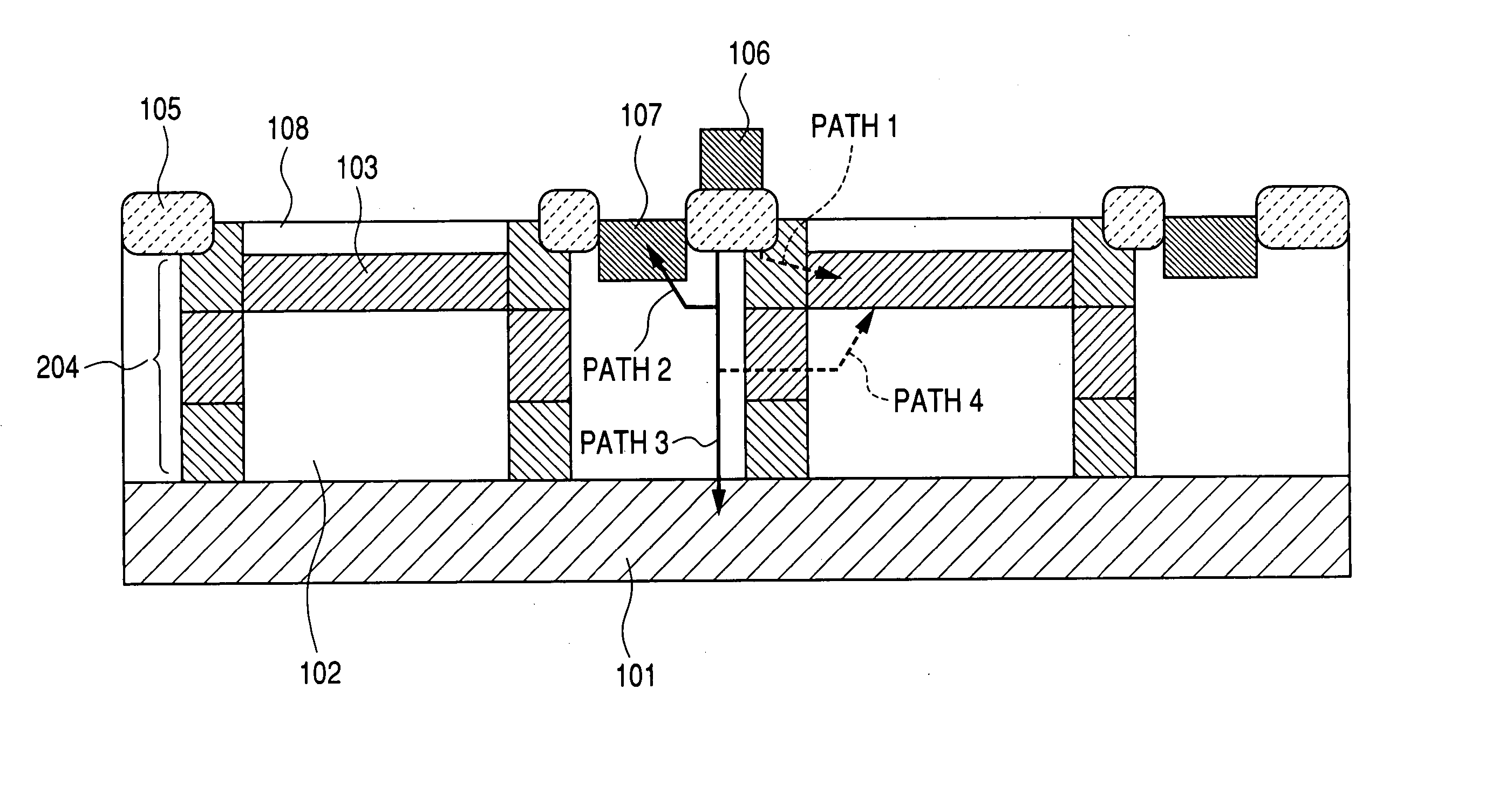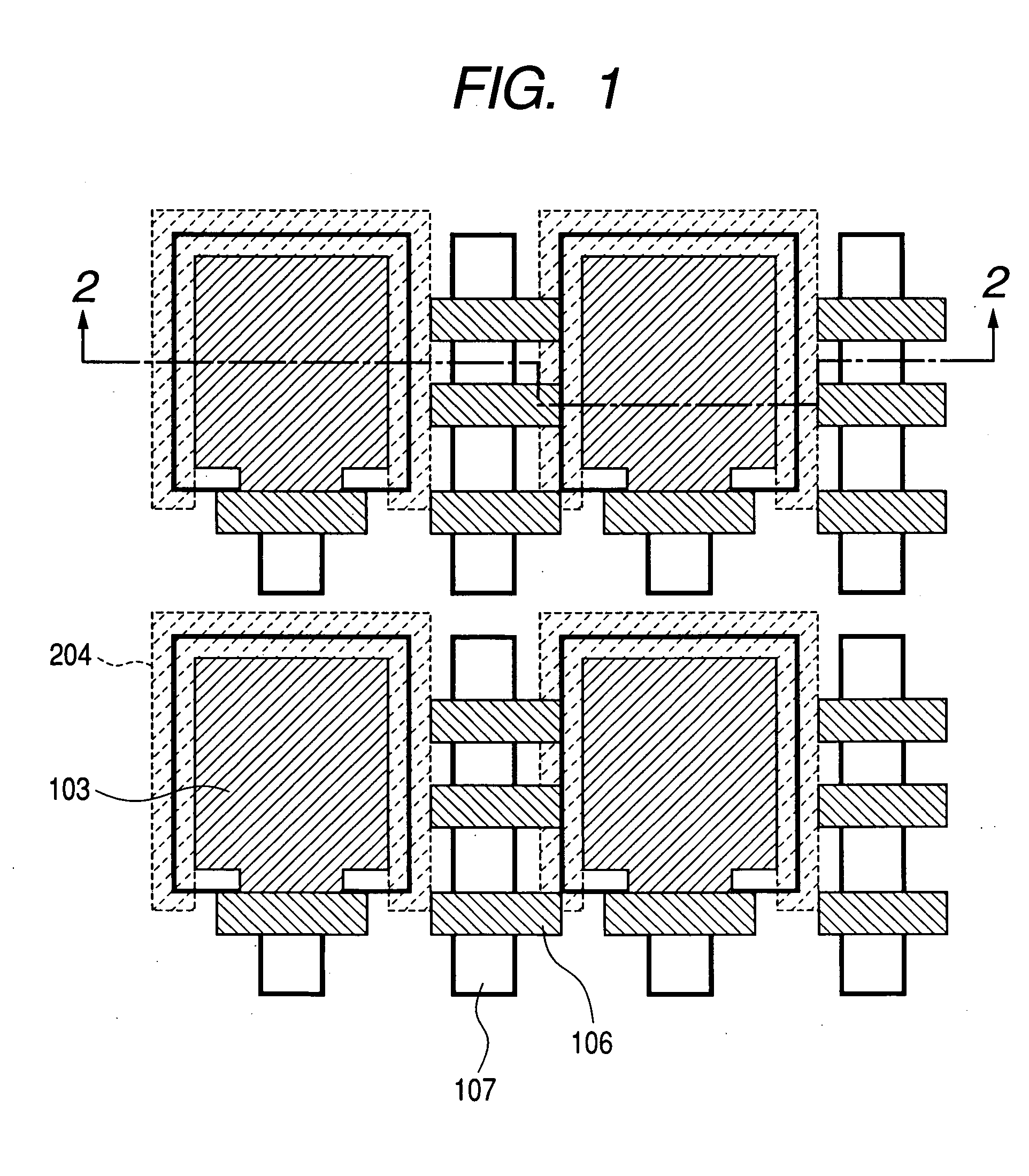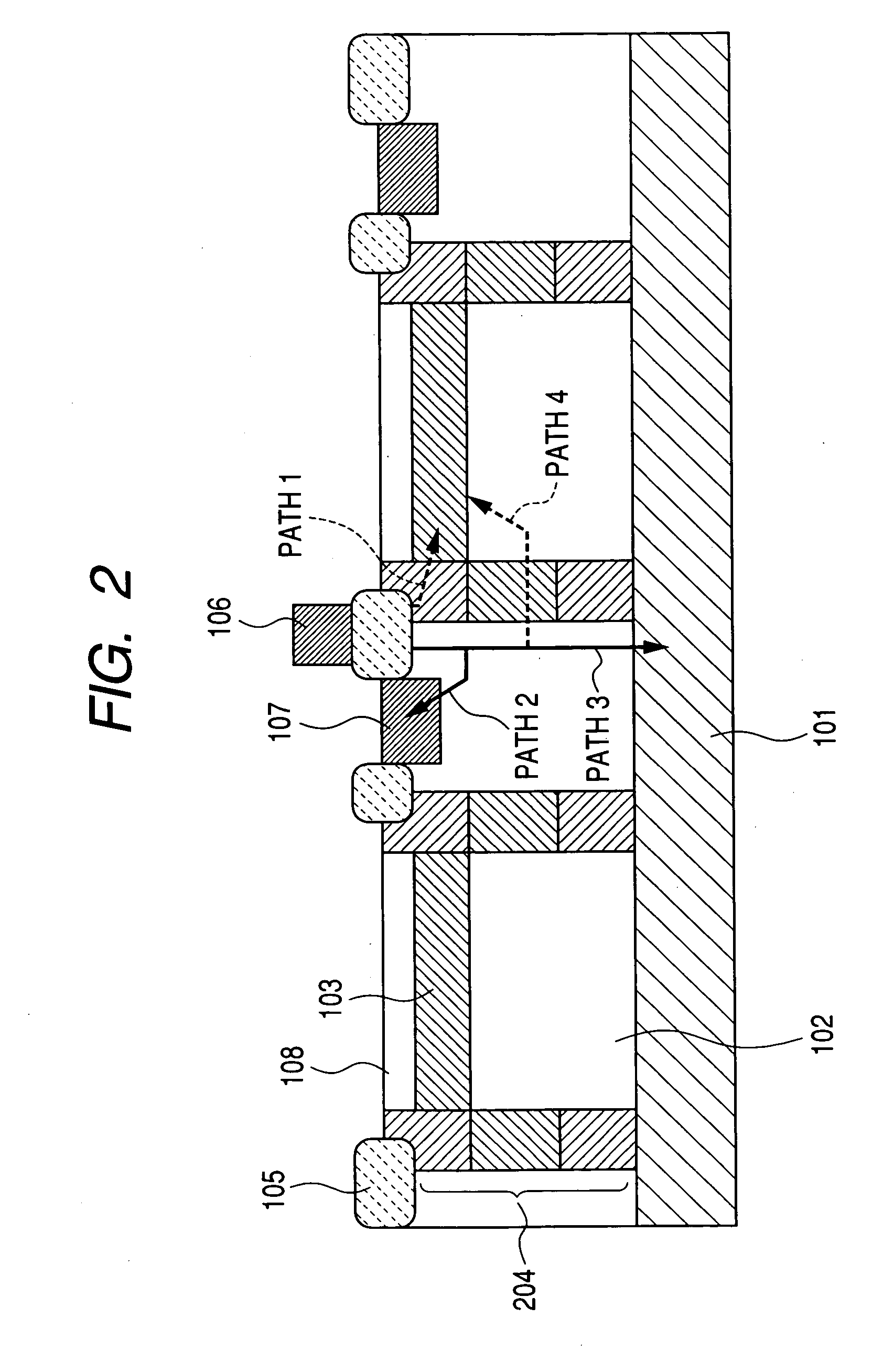Image pickup device
a pickup device and image technology, applied in the direction of radiation control devices, semiconductor devices, electrical devices, etc., can solve the problems of deterioration of blooming phenomena or color mixture, increase of dark current, and increase of charges leaked from adjacent pixels
- Summary
- Abstract
- Description
- Claims
- Application Information
AI Technical Summary
Benefits of technology
Problems solved by technology
Method used
Image
Examples
embodiment 1
[0044]FIG. 1 is a top layout view of pixels of the image pickup device of the Embodiment 1 of the present invention.
[0045]FIG. 2 is a sectional structural view along the line 2-2 in FIG. 1.
[0046] In FIG. 2, reference numeral 204 denotes a P-type semiconductor region (P+ guard layer) peculiar to the Embodiment 1.
[0047] As shown in FIG. 2, the present invention greatly decreases the dark current in accordance with a model for generating the dark current by using the following structure. As such configuration, (1) the P-type semiconductor region 204 is made to extend up to a position nearby the N-type substrate 101. Moreover, it is allowed to use a structure including at least a second P-type semiconductor region 204-2 at a position deeper than a first P-type semiconductor region 204-1. Furthermore, it is allowed to include a third P-type semiconductor region 204-3.
[0048] Furthermore, a configuration is used in which (2) the N+ region 107 is formed between the semiconductor region ...
embodiment 2
[0058]FIG. 3 is a sectional structural view of a pixel of an image pickup device of Embodiment 2.
[0059] The structure shown in FIG. 3 has a P-type semiconductor region 304-1 set over the lower portion of a MOS transistor in an adjacent photoelectric conversion unit under a P-type semiconductor region 304. In the case of the P-type semiconductor region 304-1, a concentration is set separately from the well of the MOS transistor and it is possible to form a high concentration barrier (potential barrier). It is possible to accelerate discharge of a few charges exceeding the concentration barrier (potential barrier) to the N+ region 107 and further restrain the charges from leaking into adjacent pixels by optimizing the concentration profile of the P-type semiconductor region 304-1.
embodiment 3
[0060]FIG. 4 is a top layout view of pixels of an image pickup device of Embodiment 3.
[0061] As shown in FIG. 4, by forming a P-type semiconductor region 404 into an annular shape and setting the region so that a photoelectric conversion unit and charge voltage conversion unit (FD) are included in the region, it is possible to provide an image pickup device in which dark current, blooming and color mixture are further restrained.
[0062]FIG. 5 is an illustration showing paths generated due to dark current, color mixture and blooming.
[0063] As shown in FIG. 5, when setting a P-type semiconductor region 504 as described above, paths 4-1 and 6-1 are left and a slight dark current, blooming and color mixture are left. However, by using the structure shown in FIG. 4, the paths 4-1 and 6-1 are restrained by the P-type semiconductor region 404 and it is possible to use the structure as a discharge destination of excessive charges and dark-current charges by setting a charge voltage conver...
PUM
 Login to View More
Login to View More Abstract
Description
Claims
Application Information
 Login to View More
Login to View More - R&D
- Intellectual Property
- Life Sciences
- Materials
- Tech Scout
- Unparalleled Data Quality
- Higher Quality Content
- 60% Fewer Hallucinations
Browse by: Latest US Patents, China's latest patents, Technical Efficacy Thesaurus, Application Domain, Technology Topic, Popular Technical Reports.
© 2025 PatSnap. All rights reserved.Legal|Privacy policy|Modern Slavery Act Transparency Statement|Sitemap|About US| Contact US: help@patsnap.com



